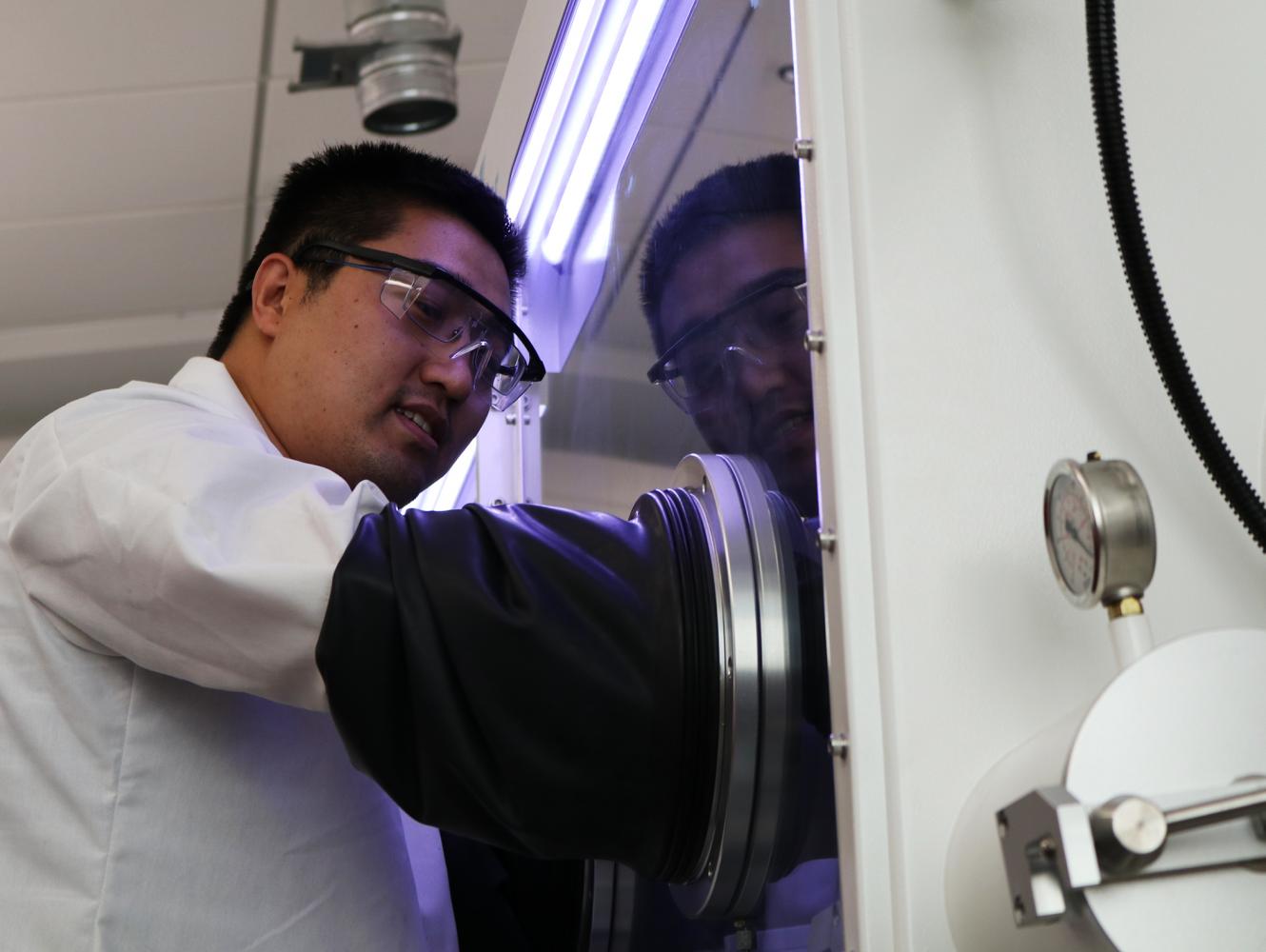
Qiang Zhang demonstrates how a glove box works Thursday in Troy Hall on Thursday.
Through Pullman Parks and Recreation, youth ranging from ages six through 15 could register for Outdoor Sciences: Campus Adventures over the past summer.
This program consisted of several five day sessions touring around the science facilities of WSU and engaging in related activities, such as helping feed the bears at the bear facility, watching chemistry demonstrations and eating Ferdinand’s ice cream.
Jamie Gaber, science instructor of the program and WSU research neuroscientist, created her own science classes through Pullman Parks and Recreation after realizing how fast her own kids were growing and wanting to spend more time with them.
During the campus adventure program, Gaber meets up with the kids at Reaney Park and they all walk to a different WSU lab each day, she said.
Gaber set up the trips and demos by starting with people she knew from the neuroscience department, she said. Then she reached out to other departments she wanted to take her own kids, such as entomology.
Or she happened to get these opportunities by chance, such as in the case of Kara Whitman, who offered her lab after overhearing information about the class at the grocery store, Gaber said. In the case of Professor Qiang Zhang, his son enrolled in the first session and asked to volunteer afterward.
“Regular people are in these labs,” Gaber said. “It’s not people that are way out there or only old people. You can make it so much more familiar. Our brain works on expectations so much.”
During the chemistry presentation, Zhang gave the group a tour of a new chemistry lab in the renovated Troy Hall, followed by an hour-long demonstration of chemical reactions.
Starting in the instrument lab, Zhang said all the analysis takes place there. Zhang also showed them the main equipment inside the lab, and students were allowed to practice using select things, such as depressurizing the glove box by stepping on the pedals.
“It’s not only about getting people to study more science. Getting people to know science is more important,” Zhang said. “In your kitchen, for example, you put baking soda in vinegar and you get bubbles. Those things are very common and kids should know why.”
The next TA dipped a dollar bill into a solution named “magic water,” which consisted of a mixture of rubbing alcohol and water. The dollar bill caught fire, but stayed intact due to the water.
Then two pieces of paper, one with Megatron from transformers and the other with Twilight Sparkle from My Little Pony. As the control test, the Megatron picture did not get dipped in the magic solution, and quickly turned to ash.
Twilight Sparkle received a coating of the solution and reacted the same way as the dollar bill, although many of the students requested destroying the picture of Twilight Sparkle as well.
A reaction named “elephant toothpaste,” used soap, food coloring, a clear solution and “magic crystals” to initiate the reaction. After adding the crystals, the solution quickly foamed and expanded out of its container, much like a volcano, a few students said.
Each student received a balloon to blow up, while Zhang pulled several balloons out of a small container of liquid nitrogen. While in the liquid nitrogen, the air inside the balloon solidified, shrinking the balloon in size. Once removed from the nitrogen, the balloon quickly returned to its original size.
Gaber also stated that she hopes to lead the campus adventures program every summer in the future. Registration for the event will be found on the Pullman Parks and Recreation website.



